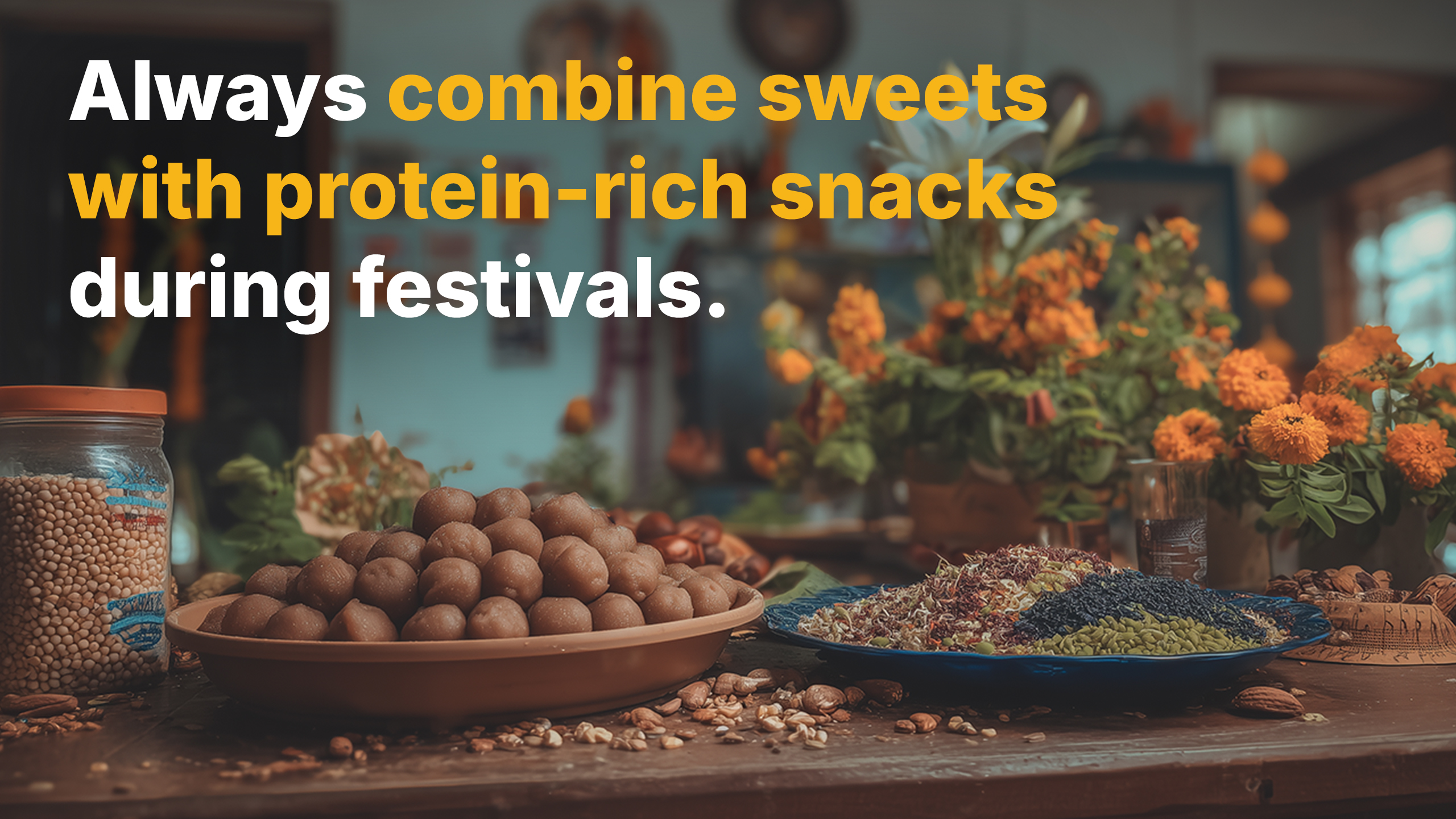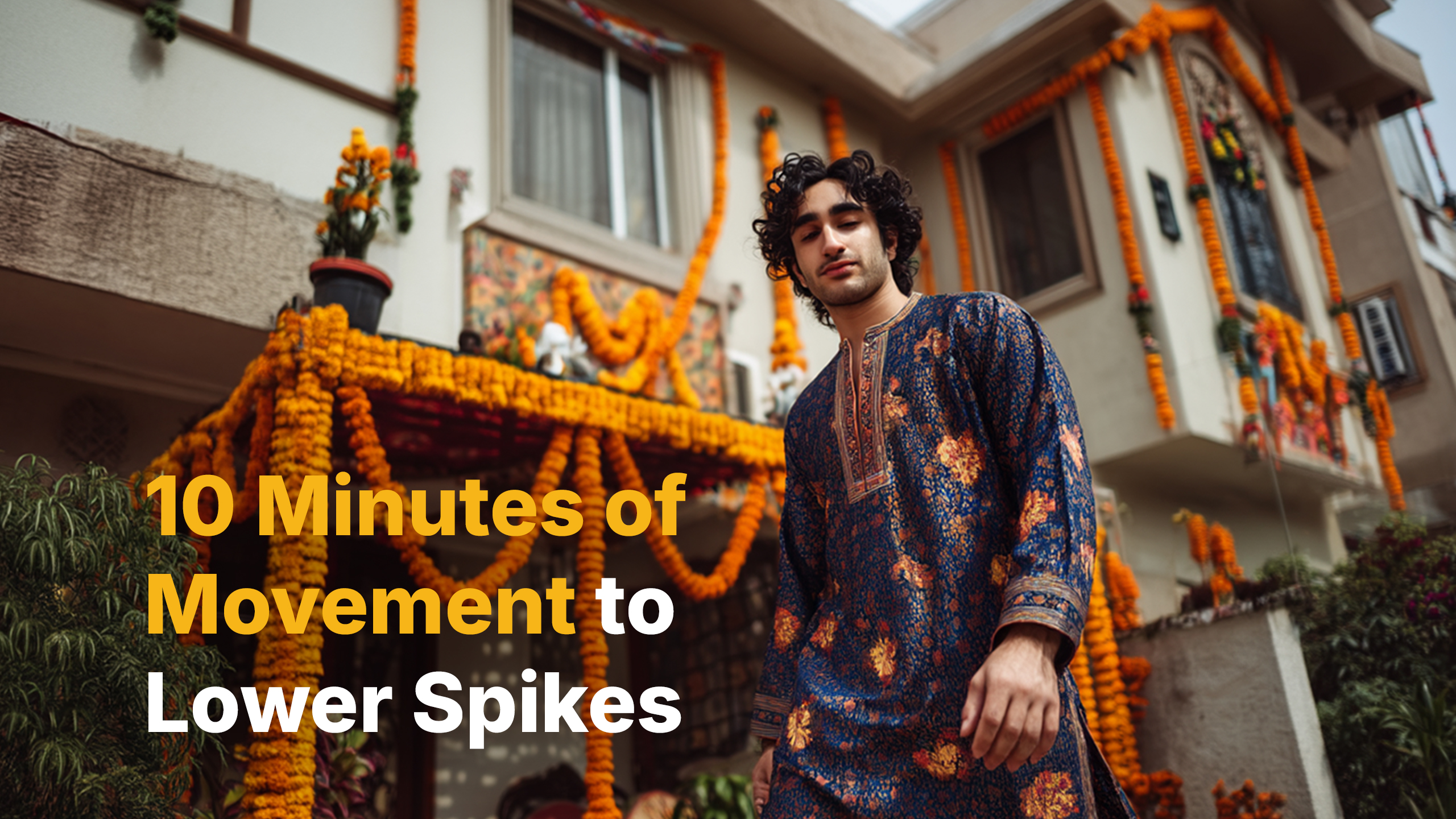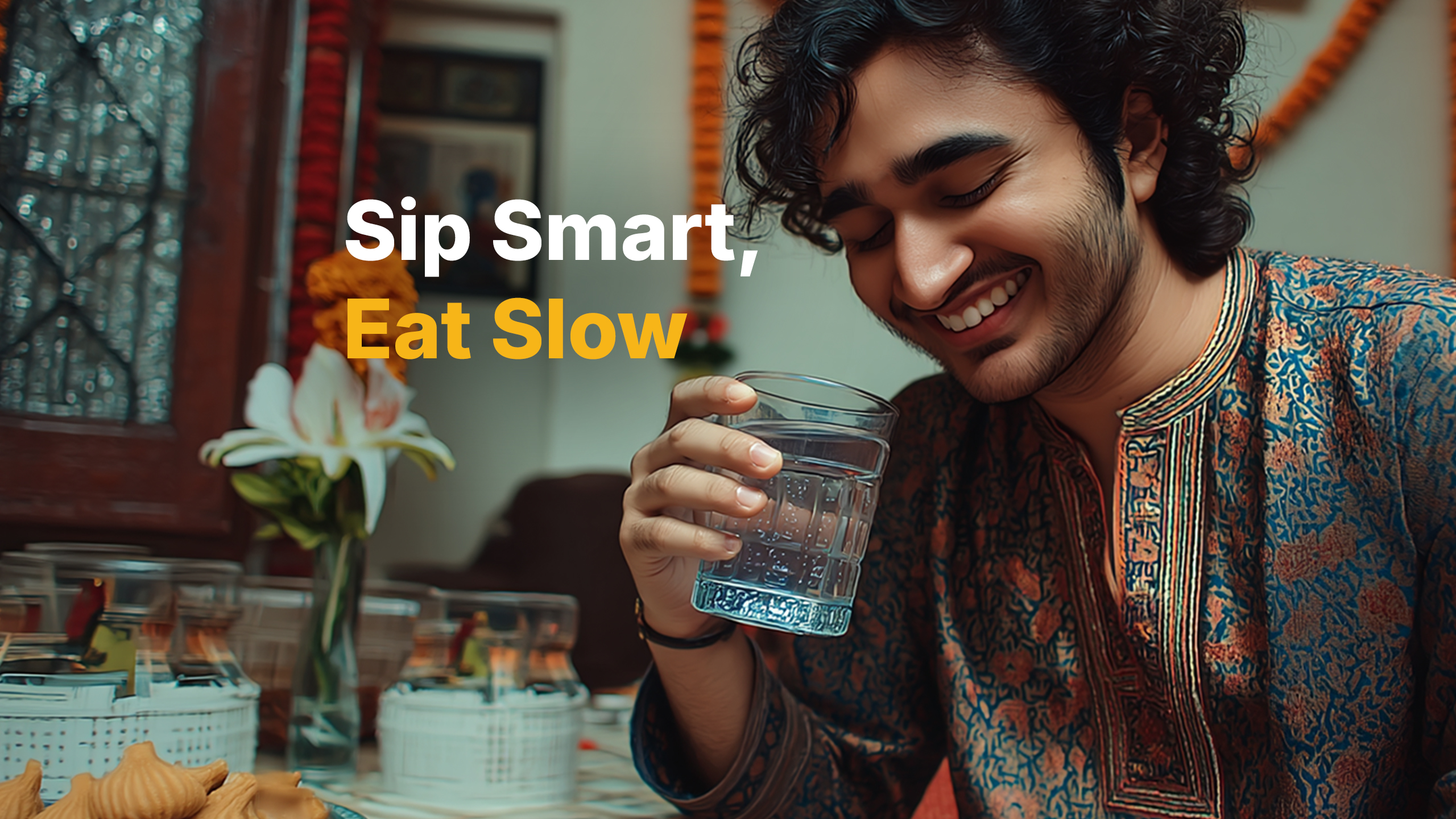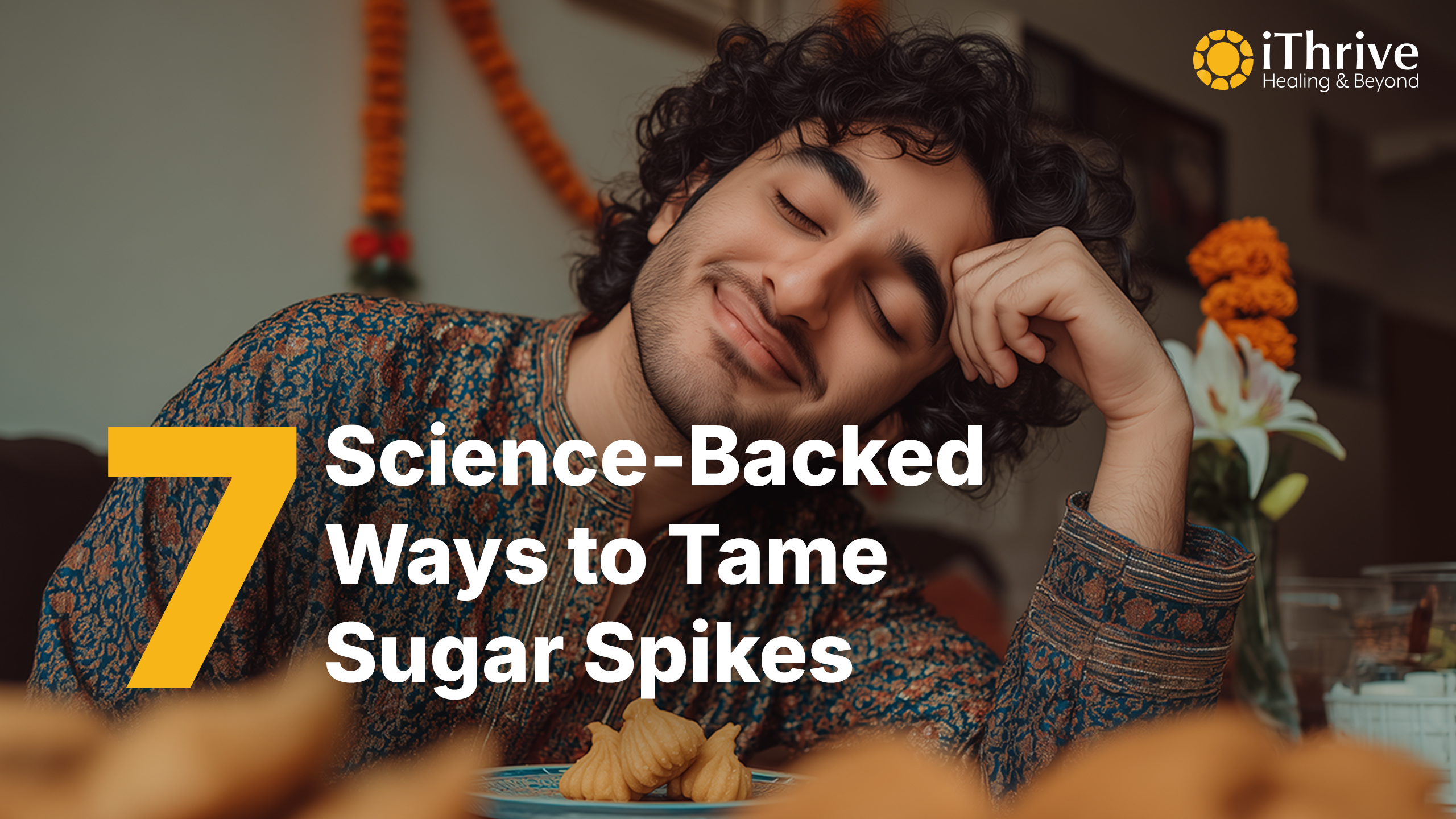It’s the festive season. The aroma of ghee, cardamom, and coconut fills the air. And then there’s the star of the show, MODAKS. Lord Ganesha’s favorite sweet is also ours, isn’t it? Soft, gooey, and soul-comforting. But let’s be real, most of us don’t stop at just one.
The result? That familiar wave of post-sweet fatigue, bloating, brain fog, or even irritability. It’s not just in your head, it’s your blood sugar spiking and then crashing.
This blog will walk you through what happens inside your body when you overdo the modaks, the consequences of repeated sugar spikes, the myths around “festival eating,” and most importantly - 7 science-backed, practical ways to balance your blood sugar naturally.
And if you’ve struggled with sugar balance for a long time, we’ll also show you how the iThrive Alive 2.0 approach gives you a deeper, more personalized roadmap to healing.

Why Do Modaks Spikes Blood Sugar?
Before we delve deep into the solution, let’s first understand what’s happening.
Modaks, whether traditional with jaggery and coconut, or the newer chocolate-stuffed versions are high in simple carbs and sugars. When you eat them, the glucose increases bloodstream quickly. Your pancreas then releases insulin to move that sugar into your cells for energy.
But when the sugar load is too high, the body can’t keep up. Result?
- A quick and sudden spike in blood sugar.
- A quick drop (sugar crash) later on.
- Symptoms like fatigue, irritability, poor focus, food cravings, or lethargy.
Over the time, repeated sugar spikes can result to:
- Weight gain especially belly fat
- Insulin Resistance
- Risk of type 2 diabetes
- Inflammation, accelerated aging, and high lipid levels.
Myth Alert: The majority of people assume that jaggery-based sweets are “healthy” as compared to refined sugar. While jaggery does have trace minerals, it is still quite high in sugar and causes spikes.
Symptoms of a Sugar Spike
How do you understand you have had too many modaks? Watch for these signs:
- Prompt energy burst followed by fatigue
- Feeling unusually thirsty
- Sugar or carb cravings soon after having a meal
- Headache or brain fog
- Mood swings or irritability
- Bloating or indigestion
If you are noticing any of these signs repeatedly after festive meals, your body is whispering that it needs help balancing sugar.

The iThrive Difference: Root-Cause Approach
At iThrive, we don't just focus on sugar levels in isolation. Through our Root Cause Analysis (RCA) approach, we dive deep into why your body is struggling with sugar balance.
We test for:
- Insulin resistance markers
- Vitamin and mineral deficiencies such magnesium, zinc, and B Complex deficiencies.
- Gut health imbalances which has a direct impact on blood sugar
- Inflammation and oxidative stress levels
- Mitochondrial energy production
- Liver markers
This is why Alive 2.0 is not just a random “diet plan". It’s:
Premium: Rooted in deep research work, crafted for true transformation.
Personalized - Your protocol is entirely based on your lab reports, health goals, and body’s needs. No cookie-cutter templates.
Ongoing Care - Healing is supported by the iThrive Tribe community for accountability, motivation, and real change.
Book a Free Consultation right away to see how Alive 2.0 can efficiently support your sugar balance and in fact overall health.
7 Science-Based Ways to Tame Your Sugar Spike
1. Take a Short Walk After Your Feast
One of the simplest yet most effective ways to bring down a sugar spike? Movement.
Studies show that even a 10 - 15 minute walk after a carb-heavy meal can help your muscles pull glucose out of the bloodstream and use it for energy. This lowers blood sugar more efficiently than sitting still.
Next time you’ve had one modak too many, invite your cousins or friends for a casual post-meal stroll. It’ll also help digestion, lighten the post-feast bloat, and keep you energized for the rest of the celebrations.
2. Pair Sweets with Protein or Healthy Fats
Ever notice how eating sweets alone makes you crash harder than when you have them as part of a full meal? That’s because protein and fat slow down glucose absorption.
If you know you’re going to indulge, balance your plate. Pair modaks with nuts, walnuts, or pumpkin seeds. For festive dinners, load up on dals, sabzis, or some ghee before reaching for dessert. This way, your blood sugar rises more steadily instead of shooting up like a firecracker.
3. Hydrate, Hydrate, Hydrate
Dehydration can worsen sugar spikes because your blood becomes more concentrated. When you drink enough water, you’re literally helping your kidneys flush out excess glucose.
Skip the fizzy colas and sweetened sherbets that come with festivals. Instead, sip plain water, coconut water, or infused water with lemon and mint throughout the day. Not just does this regulate blood sugar, but it also minimizes that post-sweet sluggishness, along with maintaining electrolyte balance.
4. Try Apple Cider Vinegar (ACV) or Lemon Juice
Here is a little kitchen hack backed by science: Apple Cider Vinegar
Research shows that a tablespoon of ACV diluted in water before or after a carb-heavy meal can lower post-meal blood sugar levels. ACV slows gastric emptying, meaning sugar from your modak enters your bloodstream at a more gradual pace.
If you can’t tolerate the tang of vinegar, you can get similar benefits by adding lemon juice or cinnamon powder to your water, as it helps lower insulin levels. Small tweaks, but big impact!
5. Don’t Skip Fiber-Rich Foods
Festivals often mean polished carbs and sweets dominating the plate. But always remember fiber is your best friend when it comes to controlling glucose
Foods such as leafy greens, carrots, chia seeds, and cucumber add bulk to your meals and also slows down sugar absorption. Start your meal with fiber and proteins. The fiber works wonders, avoiding sudden spikes.
6. Practice Deep Breathing
Stress is an extremely underrated driver of blood sugar fluctuations. When you’re stressed, your body releases cortisol, which eventually raises glucose levels.
The beauty is, just a few minutes of deep breathing, alternate nostril breathing, or box breathing can activate your parasympathetic nervous system, calming stress and lowering glucose.
So, after the modak overload, sneak away for 5 minutes of mindful breathing. It’s free, instant, and incredibly effective.
7. Prioritize Sleep
Consistent lack of sleep makes your body less sensitive to insulin, leading to higher sugar spikes.
During festivals, it’s tempting to stay up chatting, dancing, or binge-watching, but giving your body a proper 7-8 hours of rest can make all the difference in your sugar recovery. A well-rested body handles glucose far better than a tired one.
The iThrive Essentials Edge
Sometimes, lifestyle tweaks aren’t enough because your body is running on deficiencies. That’s where supplements help. At iThrive, we only recommend gut-friendly, bioavailable, and pure forms.
- Magnesium Bisglycinate is beneficial in calming stress, and supports insulin sensitivity, reducing sugar cravings.
- Probiotics improves gut health, and indirectly stabilizes sugar.
- Vitamin D3 + K2 boosts cellular repair and also reduces inflammation.
- B Complex for energy levels and glucose absorption.
Each supplement is chosen after lab work, not randomly. That’s what makes Alive truly personalized healing.
Check out iThrive Essentials to explore these supplements.

Final Thoughts: It’s Not About Guilt, It’s All About Balance
Festivals are all about joy, connection, and food. Modaks are a tradition, a symbol of abundance and celebration. Eating them isn’t a “mistake.” What matters is how you care for your body afterward.
By walking after meals, pairing sweets smartly, hydrating, adding fiber, and supporting your body with the right supplements, you can enjoy it without guilt.
And if you feel your sugar balance is slipping despite best efforts, Alive 2.0 gives you a deeper, root-cause solution. With premium care, personalized protocols, and ongoing community support, you don’t just “manage sugar” - you transform your health.
Ready to step off the sugar rollercoaster ride?
Book Your Free Consultation with iThrive today.
Subscribe to our newsletter and receive a selection of cool articles every week



.png)


.webp)

.jpg)


.webp)
.webp)

